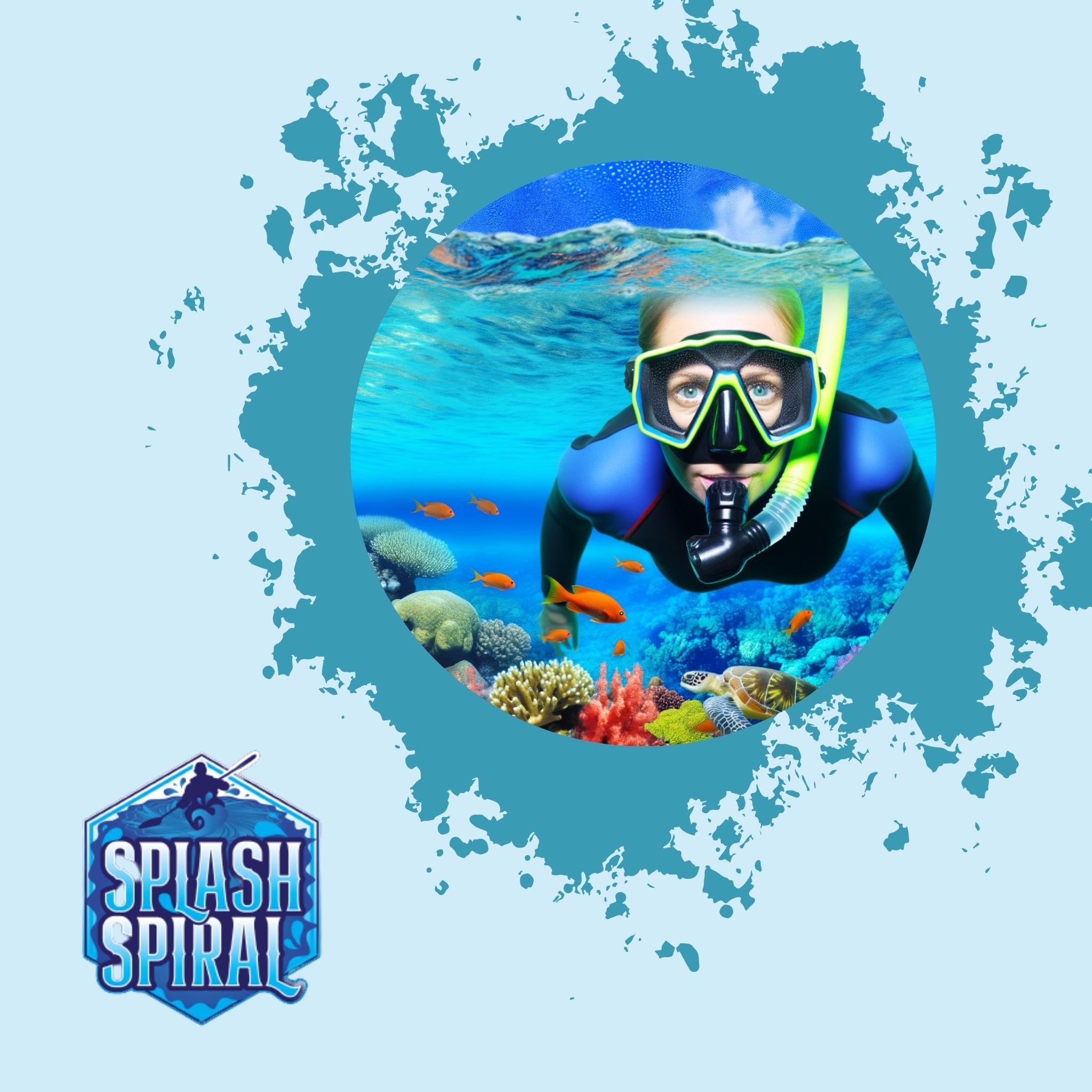
Dipping below the surface and discovering a whole new world is what snorkeling is all about. If you’ve ever wanted to explore Asia’s incredible coral reefs and vibrant marine wildlife, you're in the right spot. This guide is packed with straightforward and practical information you need to kickstart your underwater adventures.
Introduction to Snorkeling in Asia
Asia isn't just a sprawling continent above water; it’s a treasure trove beneath the waves too. When you think of ideal snorkeling destinations, Asia should be top of mind. Here's why:
First up, Asia’s marine wildlife is second to none. You’ll find a kaleidoscope of fish species darting through the water, from the iconic clownfish to the elusive manta rays. The sheer diversity keeps things exciting for novice and seasoned snorkelers alike.
Then there are the coral reefs. Picture intricate underwater landscapes bursting with color. Asia hosts some of the most stunning and well-preserved reefs on the planet. Want to swim through a meadow of corals? You’re in the right place.
Finally, there’s the sheer abundance of snorkeling sites. Whether you’re a newbie seeking easy access or a regular looking for the next awe-inspiring spot, Asia offers a mix of reefs, caves, and lagoons that cater to every level of expertise.
In short, grab your gear and dive into one of Asia’s snorkeling paradises. No matter where you choose to go, you're bound to have an underwater experience you won't forget.
Essential Gear for Snorkeling
Before you dive into the stunning underwater worlds that Asia has to offer, it's essential to gear up appropriately. Here's your lowdown on the must-have equipment that'll make your snorkeling experience smooth and enjoyable.
Mask
Your mask is your window to the underwater world. A good mask provides a clear view and keeps water out. Look for one with a comfortable, snug fit—it's crucial that it forms a good seal around your face. Avoid masks with too much pressure on the bridge of your nose or forehead to prevent discomfort during prolonged use.
Snorkel
The snorkel is your breathing lifeline underwater. It should be comfortable in your mouth and easy to breathe through. Consider a snorkel with a purge valve that makes it simpler to expel water if it gets inside. Dry snorkels, which prevent water from entering the tube, are also a good option for beginners.
Fins
Fins enhance your movement through the water, making it easier and more efficient to swim. Opt for fins that are not too stiff and fit well on your feet. Full-foot fins are typically more comfortable for warm waters like those in Asia, whereas open-heel fins paired with neoprene booties might be more suitable for cooler conditions or rocky entry points.
Optional: Wetsuits
While not always necessary, a wetsuit can offer added protection and comfort. It helps prevent sunburns, jellyfish stings, and abrasions from reefs. In warmer waters, a shorty wetsuit or a rash guard might suffice. If you're venturing into cooler waters, consider a full wetsuit for better insulation.
Optional: Underwater Cameras
Capture your underwater memories with a waterproof camera. Nowadays, many action cams are robust and can handle the aquatic environment well. Look for cameras with good low-light performance, as underwater conditions can vary.
Arming yourself with the right gear will make your snorkeling experiences in Asia comfortable and enjoyable. Happy snorkeling!
Top Snorkeling Locations in Asia
Southeast Asia
-
Thailand
- Locations: Koh Phi Phi, Similan Islands.
- What to Expect: Imagine slipping into clear, turquoise waters brimming with a riot of colors. At Koh Phi Phi, you'll find an underwater carnival of clownfish, parrotfish, and the occasional blacktip reef shark. The Similan Islands offer a different ballgame altogether with extensive coral gardens and rock formations teeming with marine life. It's a dreamscape for any snorkeler.
-
Indonesia
- Locations: Raja Ampat, Komodo National Park.
- What to Expect: Raja Ampat is one of those places that looks almost too good to be true. This archipelago is famous for its exceptional coral reefs and the sheer variety of underwater species. Manta rays, barracudas—you're swimming in what feels like an underwater Eden. Komodo National Park is equally captivating, where you can spot larger game like manta rays gliding gracefully through the depths.
-
Philippines
-
Locations: Tubbataha Reefs Natural Park, Apo Island.
-
What to Expect: Snorkeling in the Philippines is like hitting the jackpot. Tubbataha Reefs Natural Park is a UNESCO World Heritage site, and for good reason. You'll encounter pristine coral gardens and an astonishing array of marine species. Apo Island is another must-visit; it’s renowned for its vibrant underwater scenery and is a haven for sea turtles.
East Asia
- Japan
- Locations: Okinawa, Kerama Islands.
- What to Expect: Forget sushi and cherry blossoms for a second. Okinawa and the Kerama Islands offer stellar snorkeling experiences. You’ll find unique marine life such as Japanese angel fish, and the water clarity here is top-notch. It's like swimming in an aquarium but with a lot more freedom.
South Asia
- Maldives
- Locations: Banana Reef, Hanifaru Bay.
- What to Expect: Picture diving into some of the richest coral reefs you've ever seen. At Banana Reef, you’ll navigate through caves, cliffs, and overhangs, all brimming with vibrant coral and fish species. Hanifaru Bay takes it up a notch, where you can snorkel alongside whale sharks during the feeding season. It's a once-in-a-lifetime type of place.
Each of these spots offers something unique, making them must-visit locations for any snorkeler, whether you’re just starting out or looking to expand your list of underwater achievements. Grab your gear and dive in—Asia's underwater world is waiting for you.
Snorkeling Guides for Beginners
Starting off snorkeling is simpler than you might think. With just a bit of know-how and a few practice sessions, you'll be gliding over coral reefs like a pro. Here are the basics to get you started:
Basic Snorkeling Techniques
1. Breathing with a Snorkel
- Stay relaxed and breathe slowly.
- Practice in shallow water first.
- Inhale and exhale calmly to avoid panic if water enters your snorkel.
- Blow forcefully to clear any water from the snorkel.
2. Clearing Your Mask
- Keep your mask clear for uninterrupted views of marine life.
- If it fogs up, lift your head out of the water and break the seal at the top of your mask.
- Let some water in, swish it around, and then tilt your head down.
- Pull the lower edge of the mask away to let the water escape.
3. Basic Finning Techniques
- Keep your legs straight with slight bends at the knee.
- Use a flutter kick from your hips.
- Avoid wide, splashy movements. Consistent, controlled kicks are more effective.
Safety Tips
1. Never Snorkel Alone
- Always snorkel with a buddy.
- Keep an eye on each other and assist if needed.
- Sharing the experience makes it more enjoyable!
2. Be Aware of Your Surroundings
- Observe the underwater landscape and your proximity to corals and rocks.
- Avoid sharp or stinging marine life.
- Stay alert as currents can suddenly change.
3. Check Local Weather Conditions
- Weather plays a significant role in snorkeling safety.
- Avoid snorkeling during rough seas or bad weather.
- Calm, clear days are ideal.
- Check with local guides or news for the latest weather updates.
By mastering these basic techniques and adhering to safety measures, you'll set yourself up for an enjoyable and secure snorkeling adventure. Remember to take it slow, stay safe, and appreciate the stunning underwater world that awaits you.
Exploring Coral Reefs in Asia
Coral reefs are the rainforests of the sea. They teem with life, and their beauty is unparalleled. Let's take a deeper dive into why these underwater ecosystems are essential and how you can do your part in preserving them during your snorkeling adventures.
Importance of Coral Reefs
Coral reefs are biodiversity hotspots—meaning they are rich in species. Home to an estimated 25% of all marine life, they provide shelter, breeding grounds, and food for a myriad of fish and invertebrates. These ecosystems are not just pretty to look at; they play a crucial role in maintaining the health of our oceans. They act as natural barriers protecting coastlines from erosion and extreme weather events, like tsunamis and hurricanes.
Additionally, coral reefs contribute to local economies through tourism and fishing. Healthy reefs mean robust local economies, as many communities in Asia rely on fishing and snorkel tourism for their livelihood.
Best Practices to Protect Reef Sites
As snorkelers, we are temporary visitors to these delicate ecosystems. Here are some simple practices to ensure you leave the reefs as you found them, or even better:
-
Do Not Touch Corals:
- Corals are living organisms and can be easily damaged by touch. Even seemingly gentle contact can harm or kill them. Keep your hands to yourself and avoid kicking up sand with your fins, which can smother coral polyps.
-
Use Reef-Safe Sunscreen:
- Standard sunscreens contain chemicals like oxybenzone and octinoxate, which are harmful to corals. Opt for reef-safe sunscreens that use non-nano zinc oxide or titanium dioxide to protect your skin without damaging the reef.
-
Avoid Standing on the Reef:
- It's tempting to rest by standing up, but this can cause a lot of damage to the reef. Reef structures can take years to recover from physical damage, so float or tread water instead of standing.
Remember, the more we respect and protect these incredible ecosystems, the more likely they are to thrive and be enjoyed by future generations. As you explore the reefs, take only photographs and leave only bubbles. By following these guidelines, you play a part in preserving the underwater wonders of Asia.
Marine Wildlife You Can Encounter
The vibrant waters of Asia are teeming with marine life, ensuring that every snorkeling expedition is a visual feast. Here's a sneak peek into some of the incredible creatures you might encounter on your underwater journeys.
Common Marine Species in Asia
-
Clownfish: These colorful fish, made famous by the movie "Finding Nemo," are often found darting around anemones. Their playful behavior and bright orange and white stripes make them a favorite among snorkelers.
-
Parrotfish: With their brilliant hues and beak-like mouths, parrotfish are a common sight in coral reefs. They play a vital role in reef health by grazing on algae.
-
Sea Turtles: Spotting a sea turtle is a highlight of any snorkeling trip. You might see them grazing on seagrass or gliding effortlessly through the water.
Unique Sightings
-
Manta Rays: These gentle giants can be found in places like Indonesia’s Komodo National Park and the Maldives' Hanifaru Bay. Known for their graceful movements and impressive wingspans, manta rays are a sight to behold.
-
Whale Sharks: The largest fish in the sea, whale sharks, frequent snorkeling spots like Thailand's Similan Islands and the Maldives. Despite their size, they are gentle filter feeders and pose no threat to humans.
Tips for Responsible Wildlife Interaction
-
Keep a Respectful Distance: While it's tempting to get close to marine animals, maintaining a respectful distance is crucial. This minimizes stress on the animals and ensures you don't unintentionally disturb their natural behaviors.
-
Do Not Feed Marine Animals: Feeding fish and other sea creatures might seem harmless, but it can disrupt their natural feeding habits and the overall ecosystem balance. Stick to observing rather than interacting.
By following these guidelines, you can contribute to the conservation of the stunning underwater world and ensure that it's preserved for future generations of snorkelers.
Planning Your Underwater Adventures
Planning an incredible snorkeling trip to Asia involves timing, accommodation, and local know-how. Let's break it down for you.
Best Times to Snorkel in Various Regions
Picking the right season is crucial for a satisfying snorkeling experience. Here’s a quick rundown:
- Thailand: November to April offers calm seas and clear water.
- Indonesia: Visit between April and October for the best underwater visibility.
- Philippines: December to May is ideal, avoiding the monsoon season.
- Japan: Okinawa and the Kerama Islands are best from May to October.
- Maldives: Aim for November to April to enjoy warm, clear waters.
Accommodation Options Near Popular Snorkeling Sites
Staying close to your snorkel spot can make a world of difference. Here are some beginner-friendly options:
- Thailand: Koh Phi Phi offers budget-friendly hostels and mid-range resorts close to the beach.
- Indonesia: Raja Ampat and Komodo National Park feature eco-resorts and liveaboard boats that cater to snorkelers.
- Philippines: Apo Island has family-run guesthouses and eco-lodges.
- Japan: Okinawa offers everything from camping sites to luxury resorts.
- Maldives: Choose from overwater bungalows to budget guesthouses on local islands.
Local Resources and Guided Tours
Maximize your experience by leveraging local resources and booking guided tours. These guides know the best spots and can offer expert assistance.
- Thailand: Local shops in Koh Phi Phi and the Similan Islands offer affordable snorkeling tours.
- Indonesia: Dive shops in Raja Ampat and Komodo often include snorkeling packages.
- Philippines: Tubbataha and Apo Island have established snorkeling operations with experienced guides.
- Japan: Okinawa and the Kerama Islands provide well-organized snorkel tours through local diving centers.
- Maldives: Many resorts organize daily snorkeling outings to nearby reefs and offer private tours.
For more detailed information, check out Snorkeling with Coral Reefs in Southeast Asia: Top Locations to Witness Diverse Marine Life.
Plan well, and you'll be all set to dive into Asia's underwater marvels. Happy snorkeling!
Conclusion
If you've ever dreamed of dipping below the water's surface to explore vibrant coral reefs teeming with life, Asia offers some of the world's best snorkeling spots. It's a realm where every swim can unveil a kaleidoscope of colors and a variety of fascinating sea creatures. With the information in this guide, you're well on your way to starting your underwater adventure.
Essential Gear
We’ve walked you through the essential gear you'll need:
- Masks and Snorkels
- Optional Extras: such as underwater cameras
Prime Snorkeling Locations
We've also highlighted some prime snorkeling locations across Asia:
- Thailand: Featuring clear waters
- The Philippines: Home to pristine reefs
- Japan: Offering unique marine life
- The Maldives: Known for its diverse underwater ecosystem
Tips for Beginners
For beginners, mastering the basic techniques and safety tips is crucial:
- Always snorkel with a buddy.
- Stay aware of your surroundings.
- Respect local weather conditions.
By following these tips, you'll ensure a safe and enjoyable experience.
Protecting Marine Life
The underwater world of Asia is a delicate ecosystem, rich in biodiversity. Protecting the reefs and marine wildlife is paramount:
- Avoid touching corals.
- Use reef-safe sunscreen.
- Maintain a respectful distance from marine creatures.
Planning Your Trip
Ready to plan your trip? Asia's snorkeling season varies, but there’s always a perfect spot to explore:
- Accommodations: From budget to luxury resorts
- Local Guides and Tours: Enhance your experience by providing insights and ensuring you see the best each location has to offer.
With this guide in hand, you're equipped to discover the enthralling underwater landscapes of Asia. Grab your gear, keep our tips in mind, and dive into the mesmerizing underwater world.
Final Words
Happy snorkeling!







